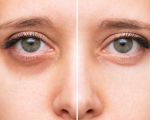
Understanding Astigmatism: A Personal Insight into Vision Issues
As someone who has dealt with astigmatism for most of my life, I’ve learned quite a lot about how this condition affects vision and the various ways it can be managed. Astigmatism is a common refractive error in the eye, meaning it’s a condition where the light entering the eye is not properly focused, resulting in blurry or distorted vision. What many people don’t realize is how astigmatism can affect daily activities, from reading a book to driving a car at night. In this article, I’ll share my personal experiences with astigmatism and give you a detailed overview of what the condition is, how it develops, its symptoms, and most importantly, how you can manage or even correct it.
What Is Astigmatism and How Does It Affect Vision?
Astigmatism occurs when the cornea or lens of the eye is not perfectly round, but instead has an irregular shape. This irregularity prevents light from focusing properly on the retina, which leads to blurred vision. Instead of the light being focused at a single point, it is spread out across multiple points, causing both near and far objects to appear blurry. The severity of astigmatism can vary greatly from person to person. Some people have only a slight distortion in their vision, while others may experience a much more significant blurring that affects their ability to perform everyday tasks.
One thing that surprised me when I first discovered I had astigmatism was how it can often go unnoticed at first. I always thought my vision was just "normal" until I realized that my eyes were straining to focus on things. Astigmatism often develops gradually, and many people may not notice the problem until they experience significant visual discomfort or difficulty seeing clearly.
What Are the Symptoms of Astigmatism?
Astigmatism comes with a variety of symptoms, which may vary depending on the severity of the condition. I can clearly remember the frustration of not being able to read street signs from a distance or straining my eyes when reading the small print in a book. Here are some common symptoms that people with astigmatism experience:
- Blurry or Distorted Vision: This is the hallmark symptom of astigmatism. Whether it's at a distance or up close, everything can appear blurry or stretched out. For me, it was especially noticeable at night when I had difficulty seeing headlights clearly.
- Eye Strain: I often felt the need to squint or adjust my gaze to try to see things more clearly. This can lead to headaches, which are another common symptom of astigmatism.
- Frequent Changes in Prescription: One of the most frustrating things about astigmatism is that your vision can change over time, requiring frequent adjustments to glasses or contact lenses.
- Double Vision: In some cases, astigmatism can cause double vision, where two images are seen for a single object, adding to the confusion and strain when trying to focus.
How Is Astigmatism Diagnosed?
If you experience any of the symptoms mentioned above, it's essential to visit an eye care professional. In my case, I first visited an optometrist when I started experiencing frequent headaches and difficulty reading street signs. The eye doctor used a variety of tests to confirm the diagnosis of astigmatism.
During a routine eye exam, the optometrist will perform a series of tests to determine the shape of your cornea and how well your eyes are focusing light. These tests typically include:
- Visual Acuity Test: This is the test where you read letters from a chart at various distances to check how well you can see.
- Keratometry: This test measures the curvature of the cornea to determine the degree of astigmatism.
- Refraction Test: By using a machine called a phoropter, the doctor can check how different lenses affect your vision and pinpoint the necessary prescription.
Treatment Options for Astigmatism
When I was diagnosed with astigmatism, I was eager to find solutions that could improve my vision. Fortunately, there are a variety of treatment options available for managing astigmatism. Here are the most common methods:
1. Eyeglasses
Eyeglasses are the most common and straightforward solution for astigmatism. For me, wearing glasses made a huge difference. The lenses are specially designed to correct the distorted light entering the eye, allowing me to see clearly. My optometrist recommended cylindrical lenses, which have a special shape that helps compensate for the irregular curvature of the cornea.
2. Contact Lenses
If you don’t like wearing glasses, contact lenses might be a good alternative. I tried contact lenses and found that they provided me with a wider field of view compared to glasses. There are two main types of contact lenses for astigmatism:
- Toric Lenses: These are specially designed to correct astigmatism by having different powers in different meridians of the lens.
- Scleral Lenses: These are larger contact lenses that cover the entire cornea and are used for more severe cases of astigmatism.
3. Refractive Surgery
If glasses or contact lenses aren’t sufficient, or if you prefer a more permanent solution, refractive surgery may be an option. Procedures like LASIK can reshape the cornea to correct astigmatism. I’ve known several people who have had LASIK and achieved significant improvement in their vision. However, it’s important to note that not everyone is a candidate for surgery, and it should be discussed thoroughly with your eye doctor.
4. Orthokeratology (Ortho-K)
Orthokeratology, also known as Ortho-K, involves wearing specially designed rigid contact lenses overnight. These lenses gradually reshape the cornea to reduce astigmatism. I didn’t try this option, but it has become increasingly popular as a non-surgical way to manage vision problems.
Living with Astigmatism: My Personal Experience
Dealing with astigmatism can be frustrating, especially when your vision affects your ability to do everyday tasks. But over the years, I’ve learned how to manage it effectively. Whether it’s adjusting to wearing glasses or trying new contact lenses, I’ve discovered that with the right treatment, it’s possible to live a normal, active life despite astigmatism.
In conclusion, astigmatism is a common condition that affects many people. The good news is that there are plenty of treatment options available to help manage or correct the condition. If you’re experiencing symptoms like blurry vision, eye strain, or frequent headaches, I encourage you to schedule an eye exam to get a proper diagnosis. With the right care, you can improve your vision and enjoy a clearer, more comfortable life.








